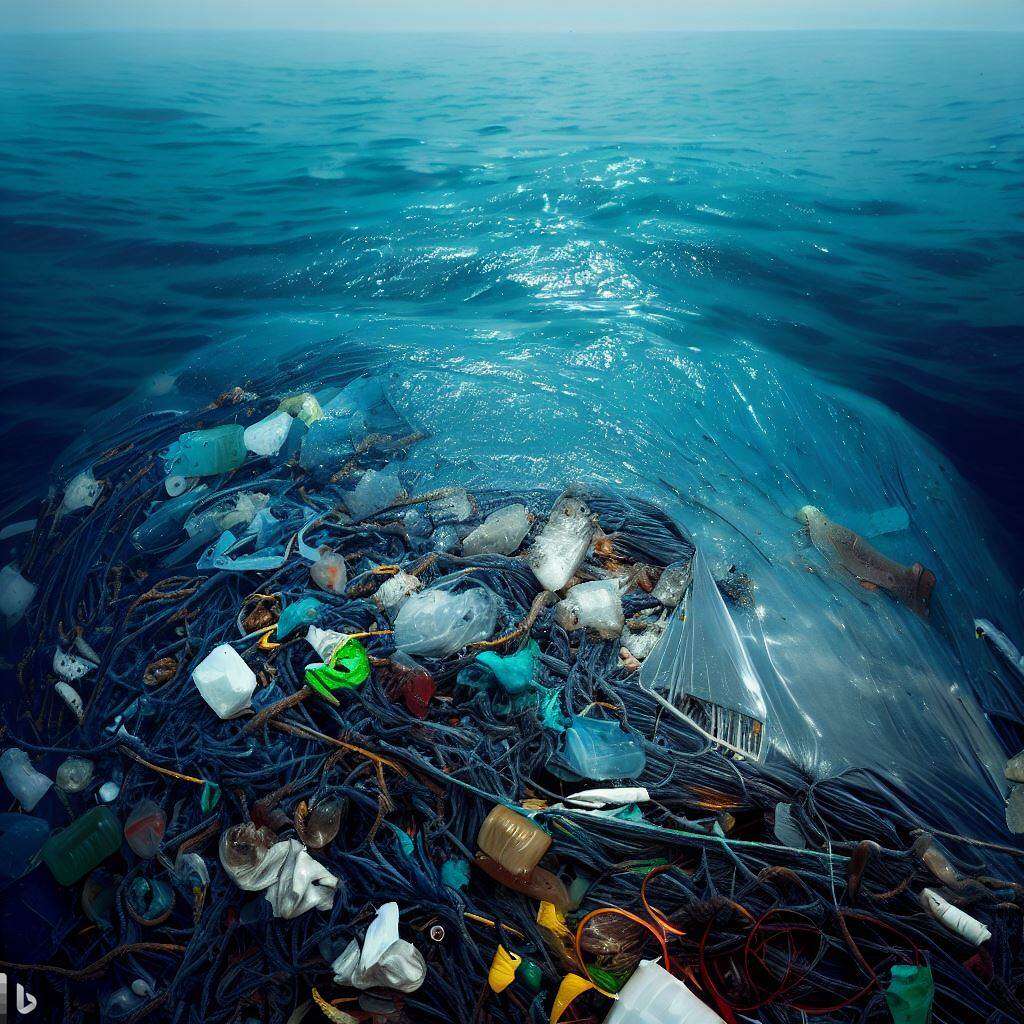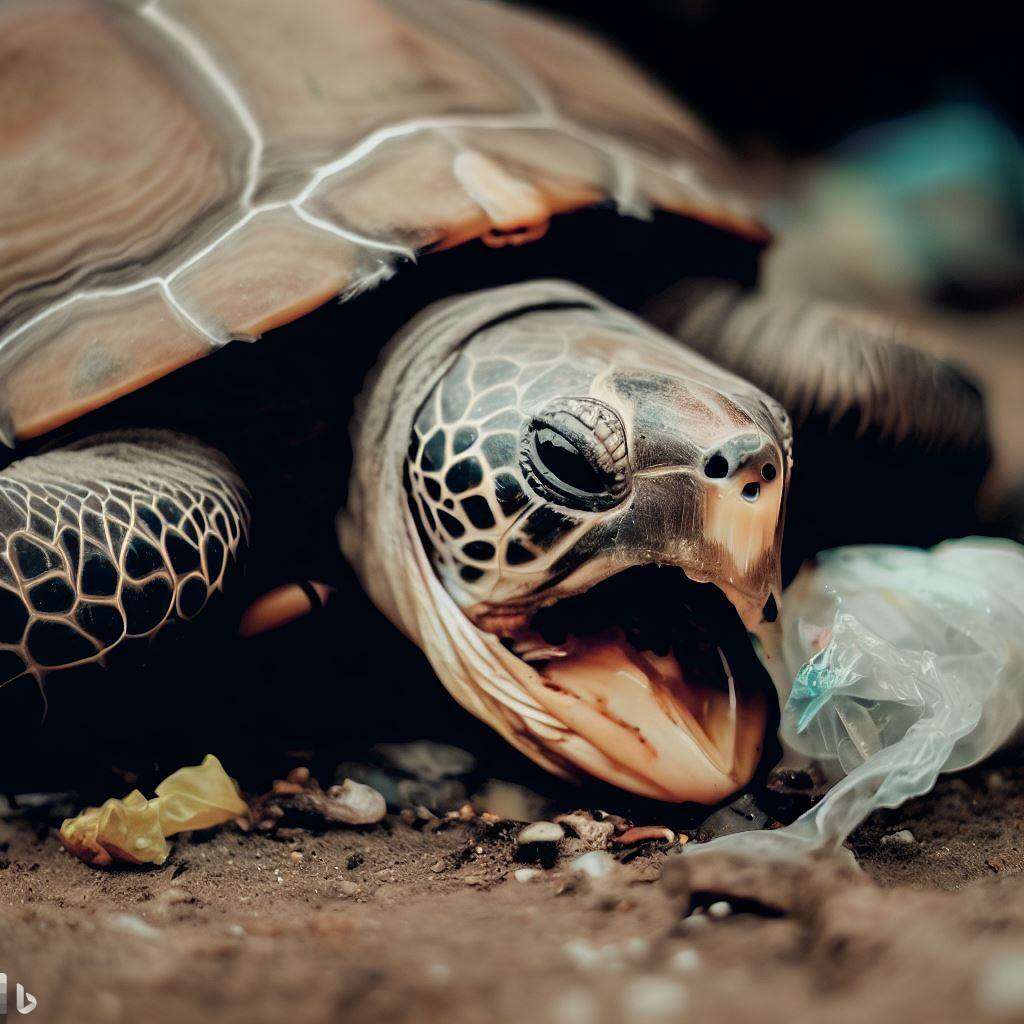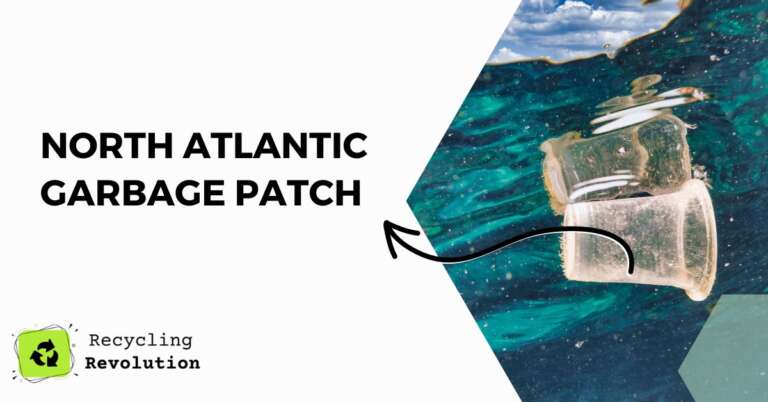Have you heard of the North Atlantic garbage patch?
It’s a massive area of the ocean where plastic and other debris accumulate, posing a significant threat to marine life, human health, and the economy.
In this article, we’ll dive into what the North Atlantic garbage patch is, its causes, and its impact on the environment and society.
What is the North Atlantic Garbage Patch?
The North Atlantic garbage patch is a large area of the ocean where plastic, fishing gear, and other debris accumulate due to ocean currents.
It is estimated to be about 3.5 million square kilometers in size, which is larger than the area of the United States.
The patch is located in the Atlantic Ocean between the east coast of the United States and Europe.
The main cause of the garbage patch is human activity.
Land-based sources, such as littering and inadequate waste management, and ocean-based sources, such as shipping and fishing, contribute to the accumulation of debris.
When Was the North Atlantic Garbage Patch Discovered
The North Atlantic garbage patch has been a concern for scientists and environmentalists for several decades, but the concept of ocean garbage patches was first introduced by oceanographer Curtis Ebbesmeyer in the early 1990s.
The North Atlantic garbage patch was specifically identified in a study published in the journal Marine Pollution Bulletin in 2010, which estimated the size and distribution of plastic debris in the region.
Since then, numerous studies and expeditions have been conducted to further investigate the extent and impact of plastic pollution in the North Atlantic Ocean.

What’s the Main Cause, Who and What is Responsible?
Marine debris comes from various sources, including land-based and ocean-based activities.
Land-based sources include littering, inadequate waste management, and stormwater runoff.
Ocean-based sources include fishing gear, shipping, and offshore drilling.
Governments, industries, and individuals all have a responsibility to address the issue of marine debris.
Governments can play a crucial role in implementing regulations to reduce waste and promote sustainable practices.
Industries can take responsibility for the products they produce and ensure that they are environmentally friendly.
Individuals can reduce their plastic consumption and properly dispose of waste.
Why Large Debris Matter
The North Atlantic garbage patch is mainly composed of plastic debris, such as bottles, bags, and packaging materials.
Large debris can pose a significant threat to marine life, as it can entangle and suffocate animals or disrupt their feeding habits.
It can also threaten human health if ingested through seafood consumption.
What are the Effects on Marine Life and Humans?
Marine life is heavily impacted by the North Atlantic garbage patch.
Sea animals can mistake plastic debris for food, which can lead to ingestion and suffocation.
They can also become entangled in fishing gear, which can result in drowning.
Disruption of ecosystems is another issue, as debris can interfere with natural habitats and food chains.
Humans are also affected by the garbage patch, as it can impact the fishing industry and lead to economic costs.
The consumption of contaminated seafood can pose health risks, such as exposure to toxic chemicals.

Affects the Human Food Chain
The North Atlantic garbage patch can impact the human food chain, as it can lead to a decline in fish populations and contamination of seafood.
The seafood industry is also affected, as it can lead to economic losses and impact the livelihoods of those who rely on fishing.
Affects the Economy
The economic impact of the North Atlantic garbage patch is significant.
It can lead to costs associated with cleanup and prevention efforts, as well as lost revenue in the fishing industry.
If the issue is not addressed, it can have severe economic consequences in the future.
Who’s Cleaning it up?
Cleaning up the North Atlantic garbage patch is a difficult and ongoing process, but several organizations have developed innovative technologies and strategies to help reduce the amount of plastic pollution in our oceans.
Here are some of the ways that the North Atlantic garbage patch is being cleaned up:
- The Ocean Cleanup: This organization has developed a system that uses long floating barriers to trap plastic debris and collect it for removal. The system is designed to be energy-efficient and self-sustaining, using the natural currents of the ocean to guide the debris towards the barriers. Once the debris is collected, it can be removed from the ocean and properly disposed of.
- 4Ocean: This company has created a line of products, including bracelets made from recycled materials, to help fund their cleanup efforts. They use a portion of their profits to fund cleanup expeditions and remove plastic from the ocean.
- Project Aware: This organization focuses on mobilizing volunteers and divers to help remove debris from the ocean. They organize regular cleanup events and provide resources and training to individuals and organizations who want to get involved.
- Ocean Voyages Institute: This organization uses a combination of technologies to remove plastic from the ocean, including sonar and satellite tracking to locate large debris, and collection nets to scoop up smaller pieces of plastic.
Innovative technologies: In addition to these organizations, there are many other groups and individuals who are developing new technologies to help clean up the ocean.
For example, some scientists are experimenting with using bacteria to break down plastic in the ocean, while others are exploring the use of drones and other remote sensing technologies to locate and remove debris.
Here are the specifics of those orgsanisations who need your help
| Name | Funding | Team Size | Website |
|---|---|---|---|
| The Ocean Cleanup | Donations, Grants, and Corporate Partnerships | 100+ | https://theoceancleanup.com/ |
| 4Ocean | Revenue from product sales (bracelets made from recycled materials) | 50+ | https://4ocean.com/ |
| Project Aware | Donations, Grants, and Corporate Partnerships | 10+ | https://www.projectaware.org/ |
| Ocean Voyages Institute | Donations and Corporate Partnerships | 10+ | https://oceancleanup.org/ |
Conclusion
The North Atlantic garbage patch is a complex issue that requires a collaborative effort from governments, industries, and individuals to address.
It has a significant impact on marine life, human health, and the economy.
Taking action to reduce waste and promote sustainable practices is essential to ensure the health and wellbeing of the planet and its inhabitants.
FAQ
How big is the North Atlantic garbage patch?
The exact size of the North Atlantic garbage patch is difficult to determine, as it is constantly changing and shifting with the ocean currents.
However, scientists estimate that it covers an area of at least 3.5 million square kilometers.
Is there a North Atlantic garbage patch?
Yes, there is a North Atlantic garbage patch, which is one of five major ocean gyres where plastic and other debris accumulate due to the circular motion of the currents.
What is the biggest garbage patch in the world?
The Great Pacific Garbage Patch is currently considered the biggest garbage patch in the world, spanning an area of more than 1.6 million square kilometers.
It is located in the North Pacific Ocean and is estimated to contain over 1.8 trillion pieces of plastic.

